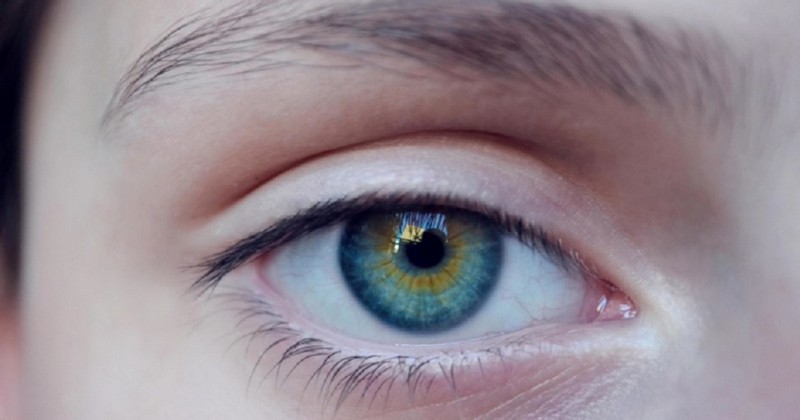The 8 Most Common Mental Disorders in Adolescence

With puberty comes a time of life changes that can become turbulent and anxious.
Mental problems do not occur only in adulthood, but approximately 1 in 5 children and adolescents suffer from a psychological disorder. 1 in 5 children and adolescents suffer from a psychological disorder..
In fact, many of the most common disorders, such as mood and anxiety disorders, often develop or begin to manifest themselves during adolescence and young adulthood.
Common psychological disorders in adolescence.
In this article we will describe eight of the most common mental health problems in adolescence.. All of them are caused to a greater or lesser extent by an interaction between biological predisposition and environmental effects, and their symptoms tend to resemble those of adults the older the adolescent gets.
Major depression and dysthymia
According to the DSM-IV, major depressive disorder is characterized by the presence of pathologically low mood and difficulty in obtaining pleasure from rewarding activities (anhedonia). Dysthymia is a depressive disorder whose symptoms have a lower intensity but are maintained chronically, for at least 2 years.
Depressive disorders are twice as common in women as in men and begin more frequently in the third and fourth decades of life, although they can appear at any age. Traumatic experiences and the learning of depressogenic beliefs during childhood are relevant factors in its development.
Generalized anxiety disorder 2.
People with generalized anxiety disorder worry excessively and systematically because of their negative, often irrational expectations. This results in associated physical and cognitive symptoms such as insomnia, irritability, stomach pain, sweating and muscle tension..
Like depression, generalized anxiety disorder is twice as common in women. It is very common that people with this problem are also diagnosed with other anxiety and mood disorders, especially dysthymia.
3. Substance abuse and dependence
The use of psychoactive substances, such as alcohol, cannabis or cocaine, commonly begins during adolescence. Although many adolescents use these substances occasionally or stop using them after some time, in other cases they may develop abuse disorders or dependence on these substances with a high risk of chronification.
4. Dissocial disorder and oppositional defiant disorder
Dissocial disorder is an early-onset, less severe variant of antisocial personality disorder. The criteria for dissocial disorder include the use of physical and verbal violence against people or other animals, theft, destruction of other people's property, or serious violations of parental and school rules.
An associated problem is oppositional defiant disorder, which is diagnosed in children and adolescents who disobey adults, have a marked tendency to become angry and accuse others of misbehavior. The diagnostic criteria for these behavioral disorders have been criticized for including ethical value judgments.
5. Anorexia, bulimia and binge eating disorder
Anorexia and bulimia nervosa are frequently associated with adolescence and young adulthood, although they can appear at any time of life. Psychosocial factors are currently contributing to an earlier average age of onset of anorexia and bulimia nervosa. to an earlier average age of onset of these eating disorders in much of the world. in much of the world.
Binge eating disorder is a disorder that falls into the same category and has recently been included in the DSM-5. It is characterized by the presence of binge eating episodes similar to those occurring in bulimia, although it is associated with obesity in the absence of compensatory behaviors such as inducing vomiting.
6. Attention Deficit Hyperactivity Disorder (ADHD)
The controversial attention deficit hyperactivity disorder is usually diagnosed in childhood. In more than half of the cases the symptoms remit in adolescence and young adulthood, but in the rest they persist into adulthood. adhd involves an increased likelihood of developing addictions, depression addictions, depression or anxiety disorders..
Since the popularization of the diagnosis of ADHD is relatively recent, it is common to find similar alterations in adults diagnosed with impulse control disorders, as well as other psychological problems related to impulsivity and psychophysiological agitation.
7. Social phobia
People with social anxiety disorder, better known as social phobia, feel great discomfort in situations involving interaction with other people. situations that involve interaction with other people. This can cause physical and cognitive symptoms typical of anxiety attacks, such as tachycardia and breathing difficulties. In many cases it is due to school rejection or bullying.
8. Adaptive and stress disorders
The adaptive disorders are diagnosed when the person presents anxious or depressive symptoms of moderate intensity as a consequence of significant life events. as a consequence of significant life events. These problems are more common in young people, including adolescents, since they tend to have less effective strategies for coping with stress.
Something similar happens with acute stress disorder and post-traumatic stress disorder. While the former label is used when symptoms triggered by a traumatic event last less than a month, post-traumatic stress disorder is a more severe and longer-lasting variant that carries a high risk of suicide.
(Updated at Apr 13 / 2024)